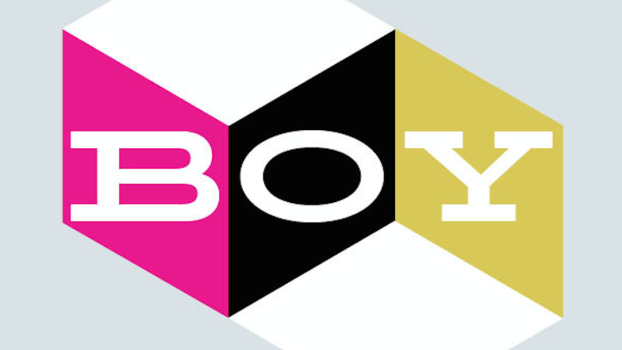By David Goldstein
It’s March 2017, and I’m in a taxi with one of my Destination Canada colleagues, sputtering through Lower Manhattan en route to a major strategy session alongside one of our key U.S. media partners with a view of changing the channel.
We were struggling, not just with the pace of traffic, but with how we were going to frame the disruption Destination Canada was trying to achieve with our new digital content strategy. We needed to make Canada stand out, both in the U.S. and in our 10 other international markets.
Meanwhile, back at headquarters, we were in the midst of our first major agency review in over five years. We’d been with the same agency for over a decade – and let’s just say that [we] were well past the “seven-year itch.”
Almost all of the firms pitching our business were proud to show us work that they’d done in the travel and tourism space. The challenge was that we’d seen a lot of the work from our competitors around the world and were impressed with very little (Ireland and New Zealand aside… perhaps another article). So we tried to glean insight from similar, but different categories.
Sometimes the quest to find what you want starts with acknowledging what you don’t want. So, it was in the back of that yellow cab that we decided to scribble down what we knew we didn’t want, which became the “seven deadly sins of tourism marketing.”
1. Chauvinism does not sell
Just because you think you live in the best place in the world, doesn’t mean folks will want to travel there. Too much of what passes for tourism marketing is chest-thumping to stir hometown pride. Nothing wrong with a little jingoism, just don’t pretend that it’s tourism marketing.
2. Ask the hard questions
We are all swimming in research. What is true of most marketing strategies is, sadly, often doubly true of tourism marketing – we ask the questions we want the answers to and not the questions we need the answers to (see the first item on chauvinism).
It reminds me of a great quote by Albert Einstein: “We cannot solve our problems with the same thinking we used when we created them.” You need to be more aware of your weaknesses rather than just your strengths.
3. Balance the poetry and the plumbing
Too often, marketers debate the balance between the “poetry,” or the creative, and the “plumbing,” which is the distribution plan to get your message to your key audiences. Tourism is habitually over-reliant on beautiful imagery, which creates a bias on creative over distribution. That was a very beautiful tree that fell in the forest…
4. Travellers are not superheroes
This is an extension of the previous sin. For some reason, too many tourism marketers believe their customers are members of The Avengers. Showing skiers on a 45-degree slope, or surfers in a 20-foot pipe, or motor-cross racers barrelling through the woods – no doubt it looks super cool, but the average consumer is picking a vacation, not a trip to the orthopaedic surgeon.
5. Epic vs. experience
Too many tourism marketers use large vistas as a crutch. Mea culpa, we too have been guilty of this and have been trying to rein in this form of “travel porn.”
The worst are the big beautiful landscape shots, or better yet, aerial shots, with no human beings in the frame. There’s a difference between creating the image of a serene place to get away from it all and the image of a human-free place you can’t get to. I’m not saying ditch the epic, but ensure it includes humans who are actually engaged in real experiences. An epic mountain at sunrise is cool; seeing kids with whipped cream on their noses from an après ski hot chocolate… that’s priceless.
6. A high tide doesn’t raise all boats
Too many destination marketers rely on strong gateway arrivals in high season to measure success, as though thinking that if you fill London, Paris, Toronto and Sydney during the summer, there will be some sort of trickle-down effect for surrounding destinations. Getting folks to Paris in the summer is not marketing success – it’s gravity. Getting them to go in February and then take a side trip to wine country, now that’s marketing.
7. You hunt alone, you’ll die alone
When well-executed, this is one sector where presumed competitors can be great allies. In Canada, the principle took form in our NorthStar 22 “Team Canada” approach, which built alignment with our 13 provinces and territories, eight major city and resort centres, and other industry partners to make the conscious decision that they may compete domestically. But internationally, we’d have more success hunting as a pack.
In June, Destination Canada unveiled our country’s new brand identity, “Canada. For Glowing Hearts.” Laying out the “seven deadly sins” that day in the cab became a corner stone of our exhaustive process to refresh the Canada brand, which has seen us move past the “3Ms” (moose, mountains & Mounties) and also past “Keep Exploring” to a new domain that was not just about the sights, but held the spirit of Canadians at the centre of the frame.
We want Canada to be known – to Canadian and international travellers – as a destination for those with a thirst for inclusive, transformative, sustainable and authentic experiences… that we are the destination “For Glowing Hearts.”
 David Goldstein is president and CEO of Destination Canada, the country’s national tourism marketing agency.
David Goldstein is president and CEO of Destination Canada, the country’s national tourism marketing agency.























